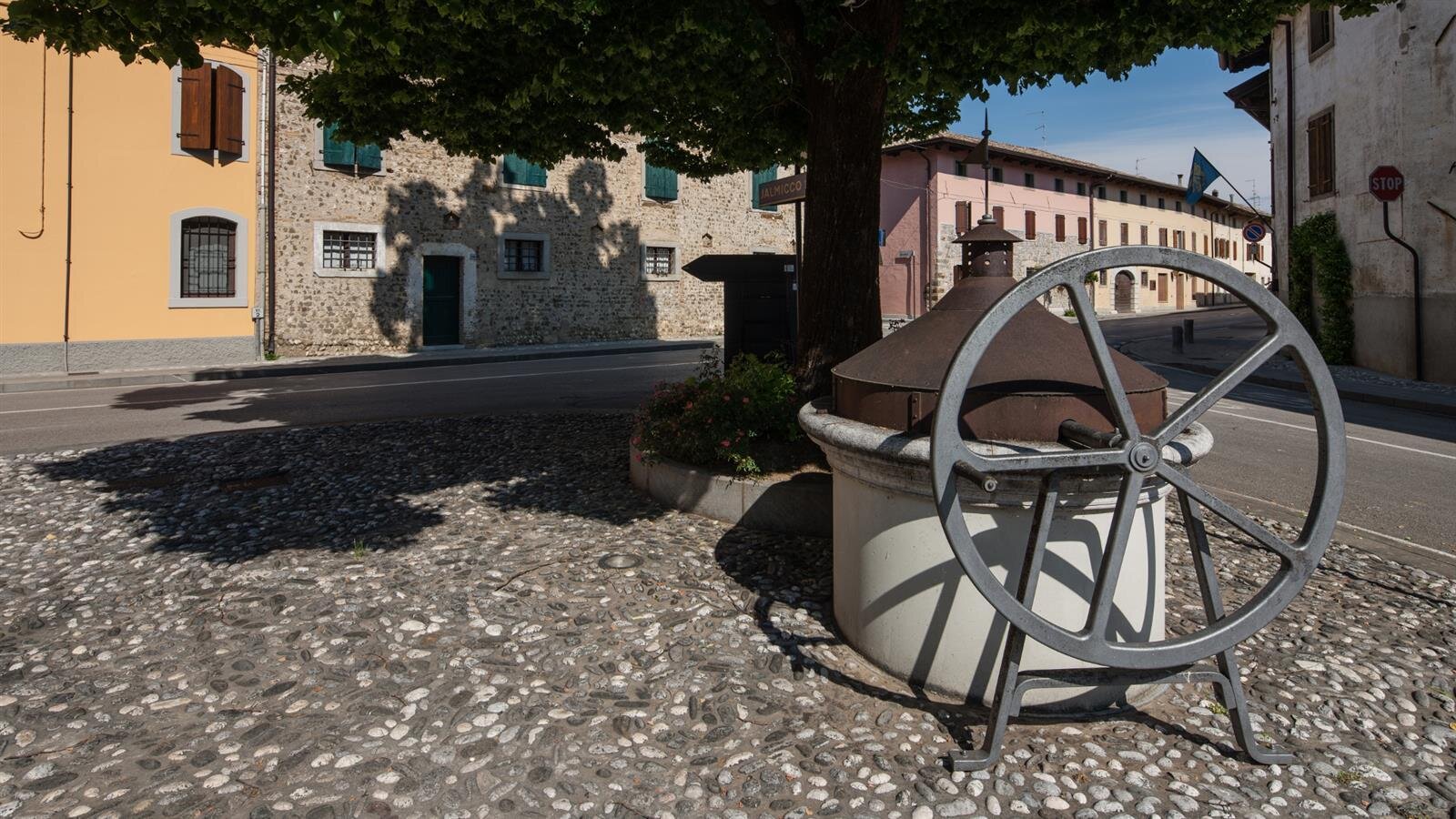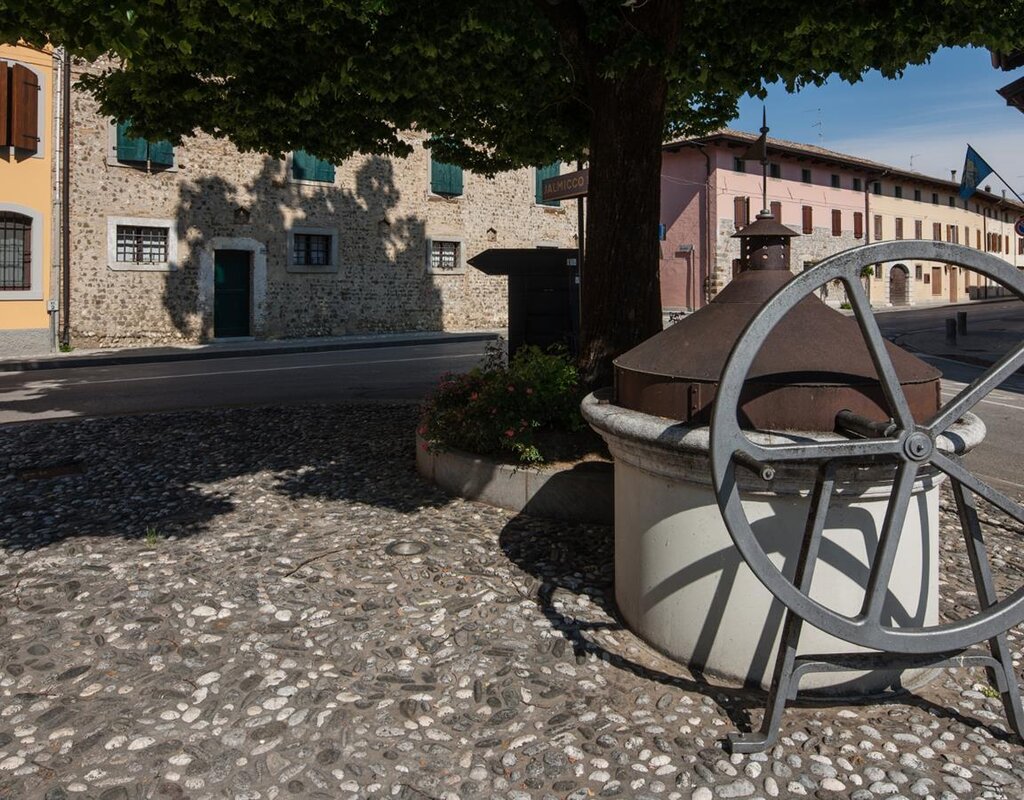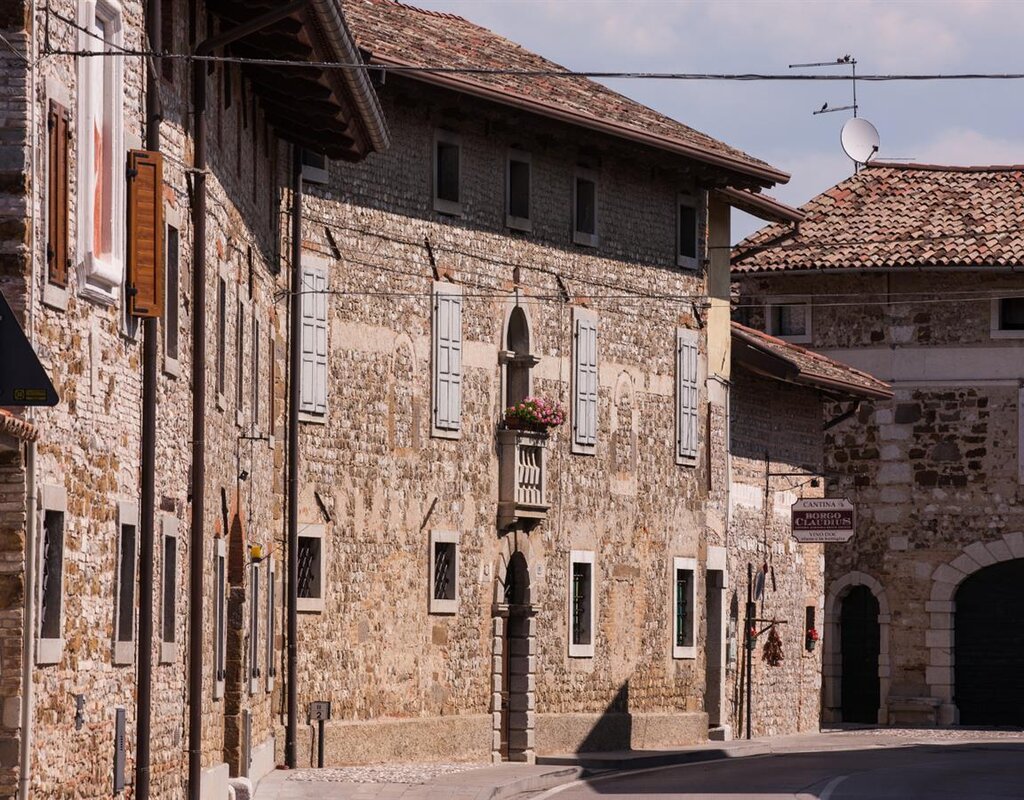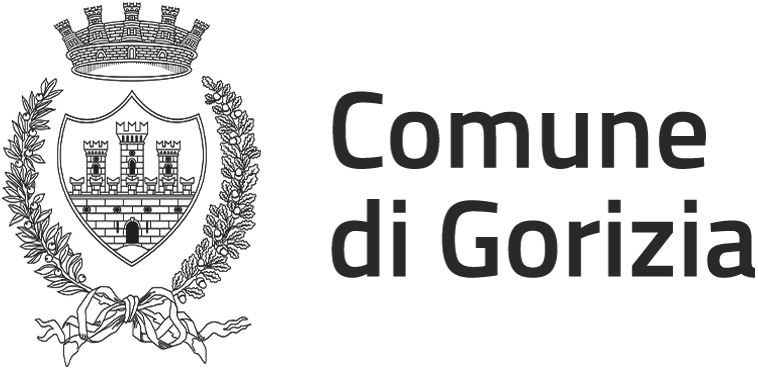Where:
Trivignano Udinese
Clauiano

Ancient medieval village with Roman influence. 'Of stones and rocks' because, after being destroyed by the Turks, it was rebuilt using stones and rocks from the nearby Torre stream. Visit Casa Gardellini, Casa Beltramini, and Villa Manin Guerresco, an 18th-century noble residence
A village of stones and pebbles The first Clauiano settlements bear Roman footprints, but it was mentioned for the first time in 1031. Destroyed by the Turks, it was afterwards rebuilt shaping up as a borough of pieris e claps, that in the local Friulian language means "rocks and stones".The buildings surround the churches of San Giorgio to the south and San Martino to the north; some of the first houses we run into are Casa Gardellini, Casa Beltramini with its beautiful internal courtyard and Casa Tonutti Campagnolo, inside which is a valuable fresco. Between the 17th and 18th century the two north and south nuclei expanded their boundaries and merged into what they look like now; many parts of the complexes of Casa Colussi, Dri, Minin e Palladini date back to this period. Villa Ariis, Villa Manin and Casa Zof Piano, all with typically decorated porches, are from the 18th century. Casa Barnaba Manin, Casa Calligaris Foffani and Casa Bosco are from the same period but with older origins.
The church of San Giorgio Martire is also from the 18th century. In the mid-nineteenth century, the big families improved the town's economy by building a spinning mill. A special mention goes also to Villa Manin Guerresco, a precious eighteenth-century noble residence. Numerous events take place annually in Clauiano, during which this magnificent medieval village opens gates and courtyards to charm visitors with glimpses of ancient beauty.
Free audioguide
Information
Palmanova Tourist Office
Borgo Udine, 4
33057 Palmanova
ph. +39 0432 924815
info.palmanova@promoturismo.fvg.it




